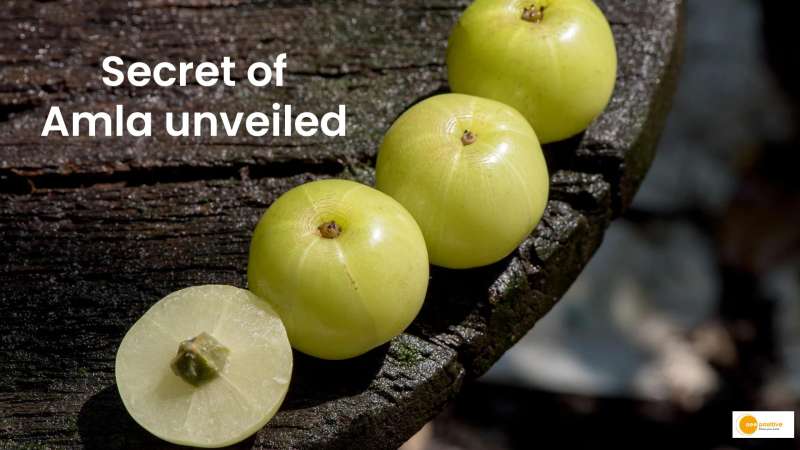

Amla, also known as the Indian gooseberry, has long held a cherished place in traditional Indian and Chinese medicine. This fruit has myriad health benefits.
Amla, scientifically known as Phyllanthus emblica. It is famed for its medicinal properties, which include:
1. High Vitamin C Content: Amla is renowned for its Vitamin C richness, making it a natural source of this essential nutrient. Vitamin C is crucial for overall health, supporting the immune system, promoting healthy skin, and aiding in wound healing.
2. Phytochemicals Galore: Besides Vitamin C, Amla contains a wealth of phytochemicals, which are plant compounds known for their antioxidant and health-boosting properties. These phytochemicals contribute to Amla’s reputation as a potent natural remedy.
3. Minerals and Amino Acids: Amla is also a source of essential minerals and amino acids that play vital roles in maintaining bodily functions and promoting well-being.
What makes Amla a powerhouse of antioxidants?
However, the secret behind Amla’s extraordinary antioxidant power has remained a mystery – until now.
In an achievement, scientists from the Indian Institute of Science Education and Research (IISER) in Bhopal have decoded the genetic composition of Amla, shedding light on what makes it a powerhouse of antioxidants.
The team’s research unveiled that Amla’s antioxidant prowess can be attributed to the adaptive evolution of specific genes responsible for producing antioxidants like Vitamin C and flavonoids.
Adaptive evolution refers to the genetic changes in an organism that enhance its suitability to its environment, ultimately increasing its chances of survival and reproduction.
The study also highlights that Amla’s adaptive evolution could be a key factor in its ability to thrive in diverse climatic zones and environmental conditions. This adaptability has allowed Amla to flourish across a range of geographical regions.
One of the significant outcomes of this research is its potential impact on Amla cultivation. By understanding the genetic makeup of Amla, breeders may now have the tools to develop enhanced cultivars with increased Vitamin C content and medicinal properties.
This development could lead to a more abundant and potent supply of Amla-based products for medicinal and nutritional purposes.
The dedicated team behind this research is led by Vineet Sharma, an Associate Professor of Biological Sciences at IISER Bhopal. The team includes researchers Shruti Mahajan, Manohar Singh Bisht, and Abhisek Chakraborty.
Their findings have been published in the open-access journal “Frontiers in Plant Science.”
Amla vs. Other Vitamin C Sources
Notably, Amla’s Vitamin C content surpasses that of other Vitamin C-rich fruits like the West Indian cherry from Mexico and the Camu Camu fruit found in Brazil, Peru, Colombia, and Venezuela.
This makes Amla a superior choice for those seeking a natural source of Vitamin C, as opposed to synthetic alternatives.
Broadening Horizons
Beyond its immediate implications for Amla cultivation and medicinal applications, the genome sequencing of Amla opens doors to a deeper understanding of this fruit’s evolutionary lineage.
Through comparative analysis with 26 other plant species, the research sheds light on Amla’s evolutionary journey.
Applications in Various Fields
The knowledge gained from this study extends its reach into multiple domains. It has the potential to inform the development of improved nutraceuticals, food products, cosmetics, and pharmaceuticals.
Moreover, it sets the stage for further horticultural and genomic studies, unlocking new avenues for research and innovation.
Their discovery of the genetic composition responsible for Amla’s rich antioxidant content not only enhances our understanding of this remarkable fruit but also opens up exciting possibilities for its cultivation and application in various fields.


